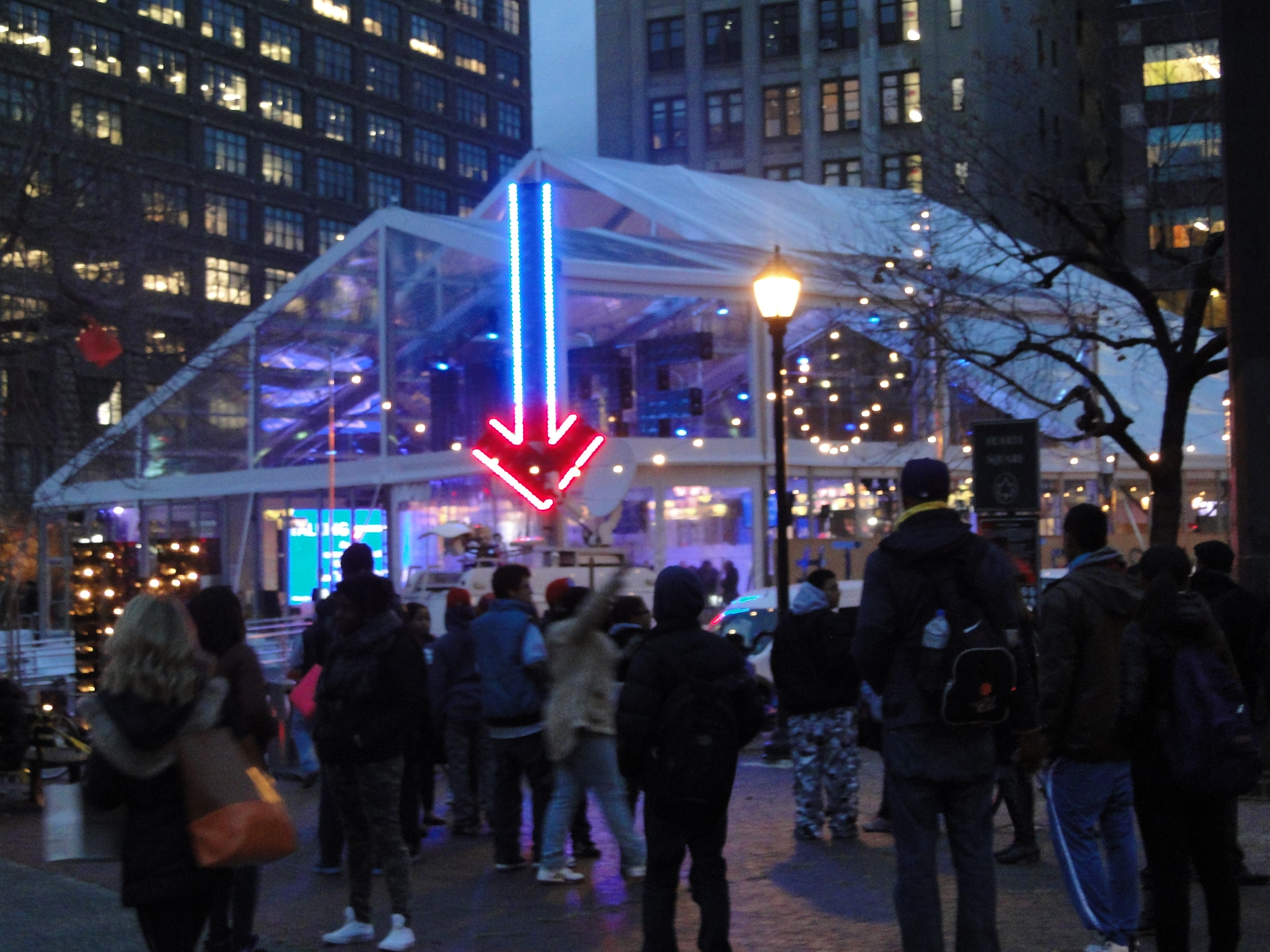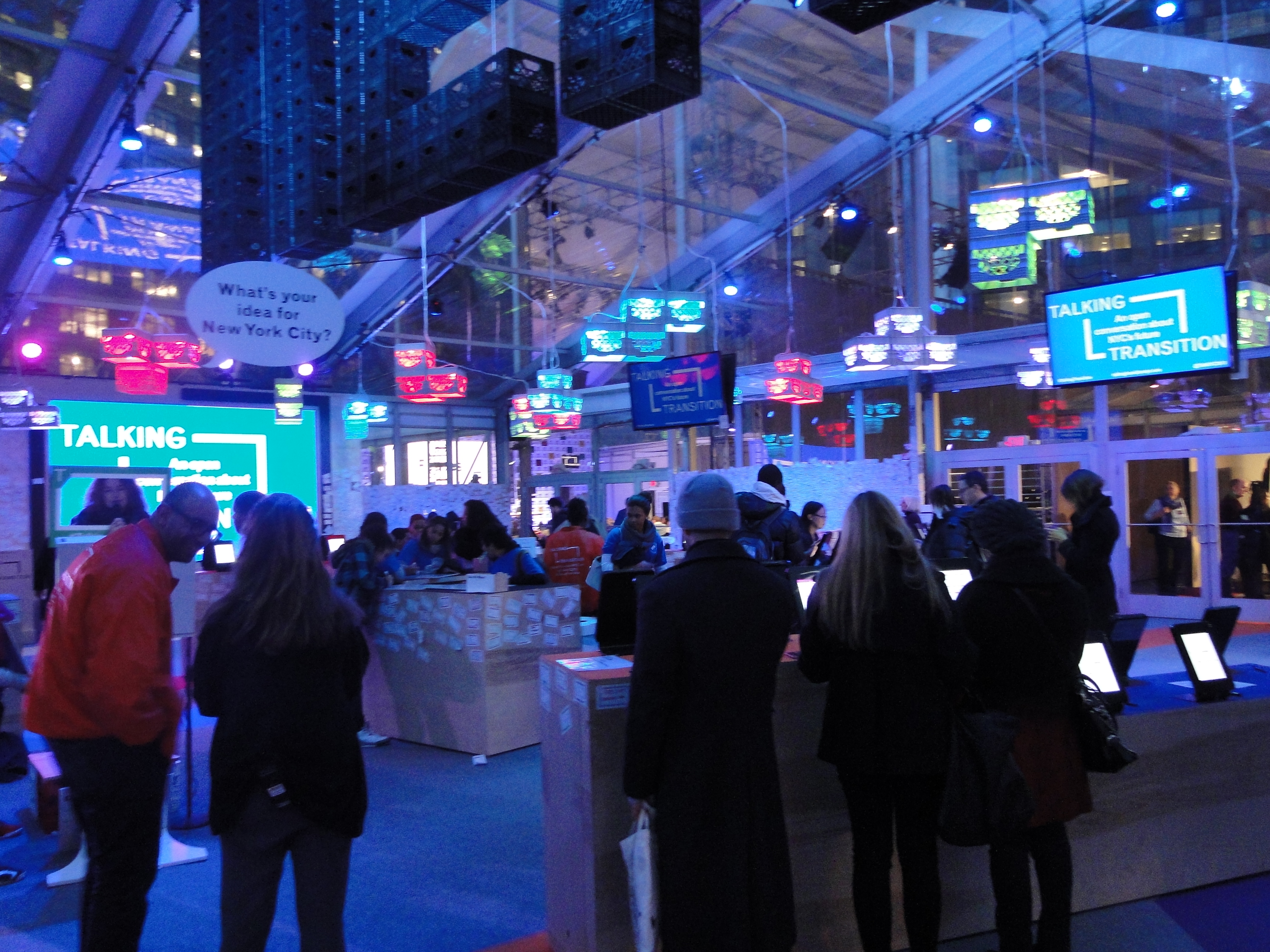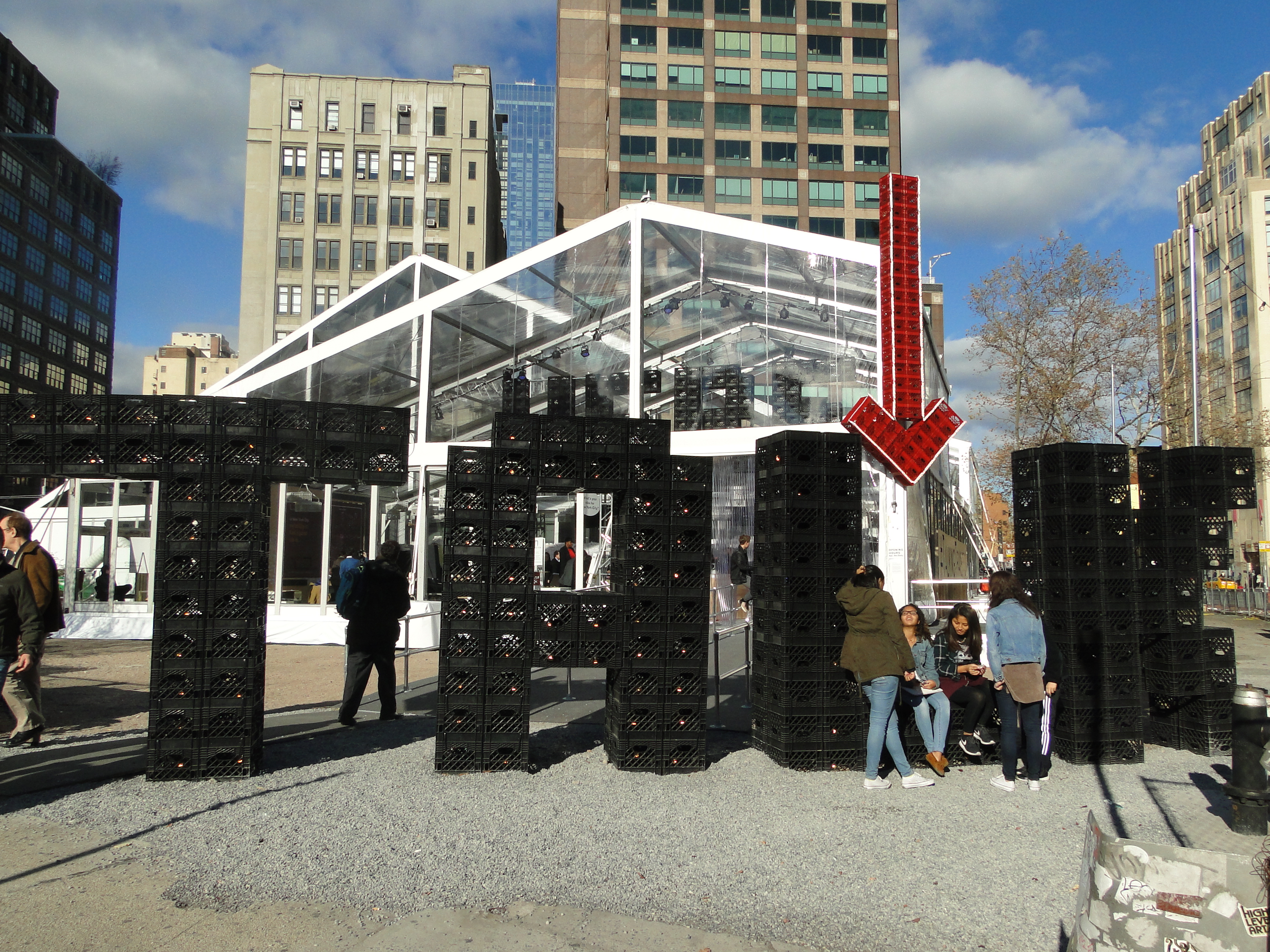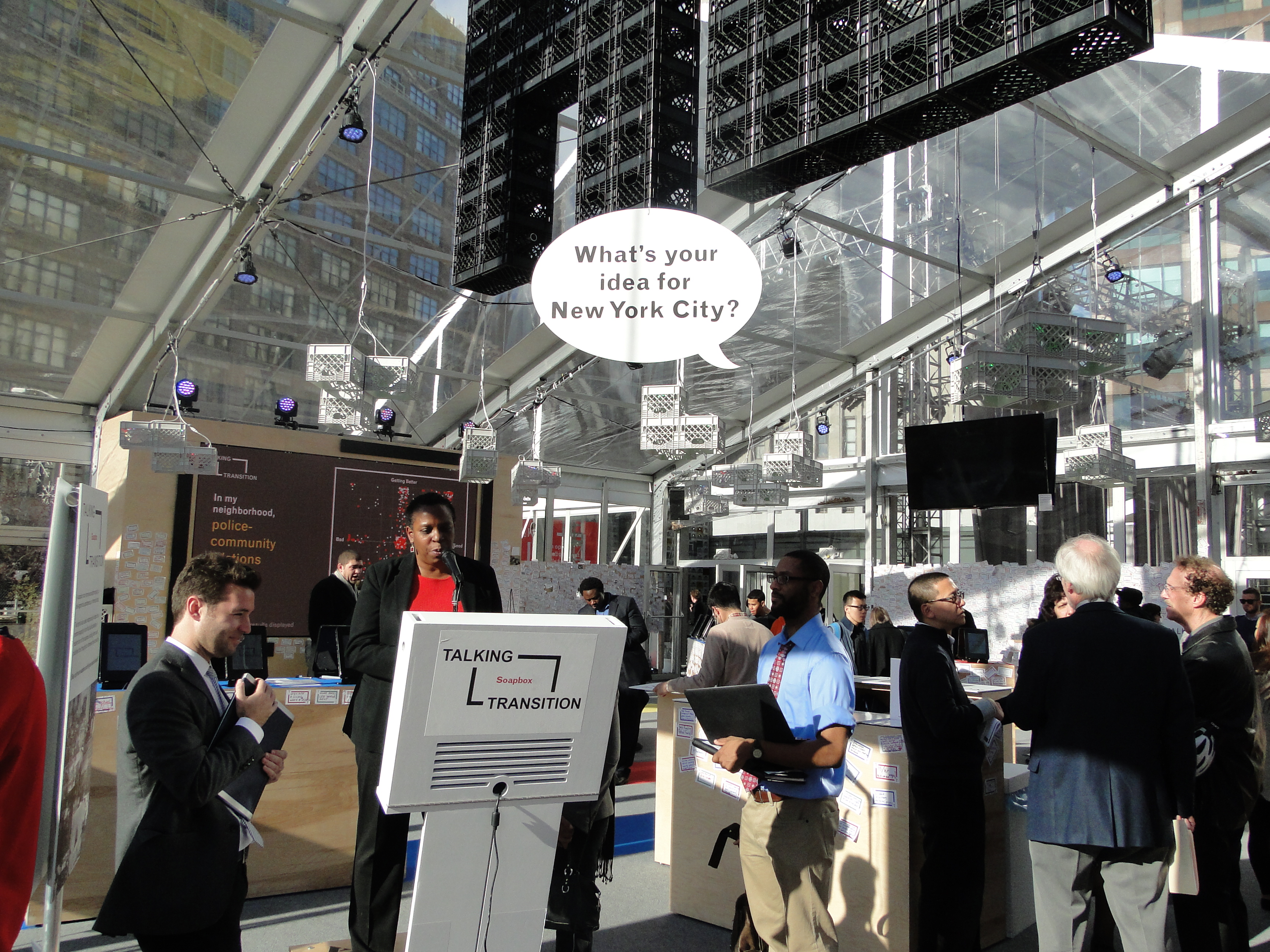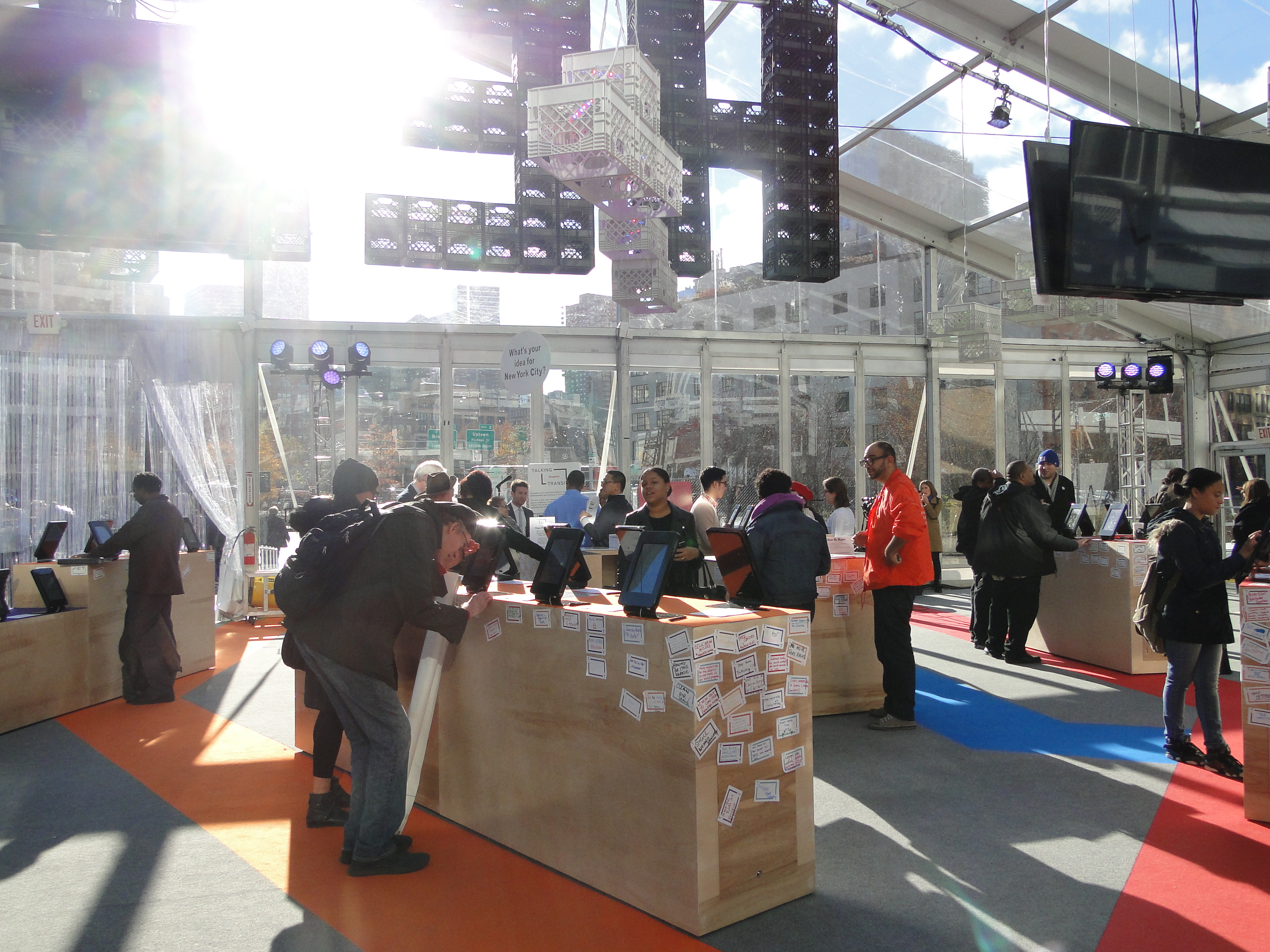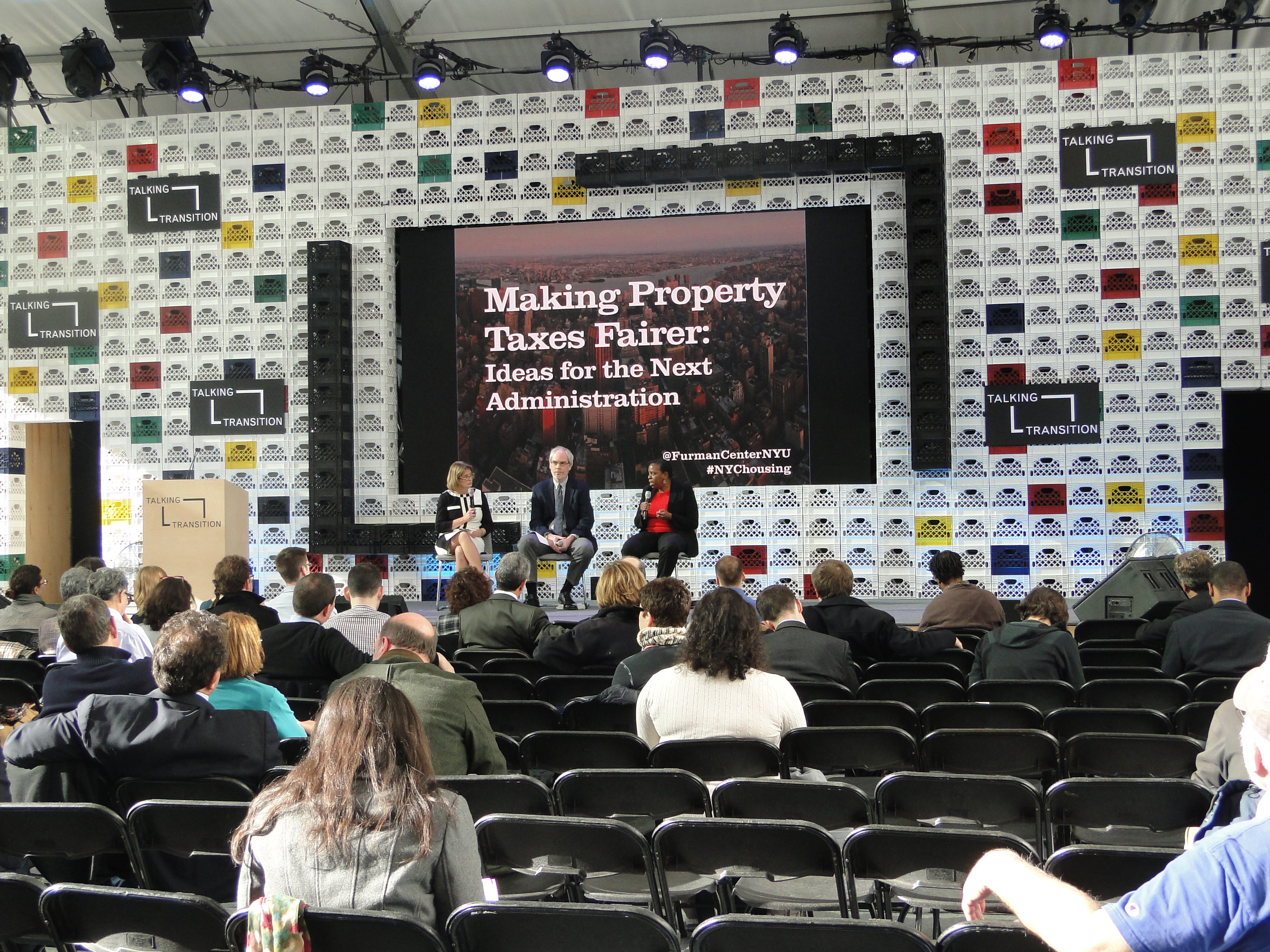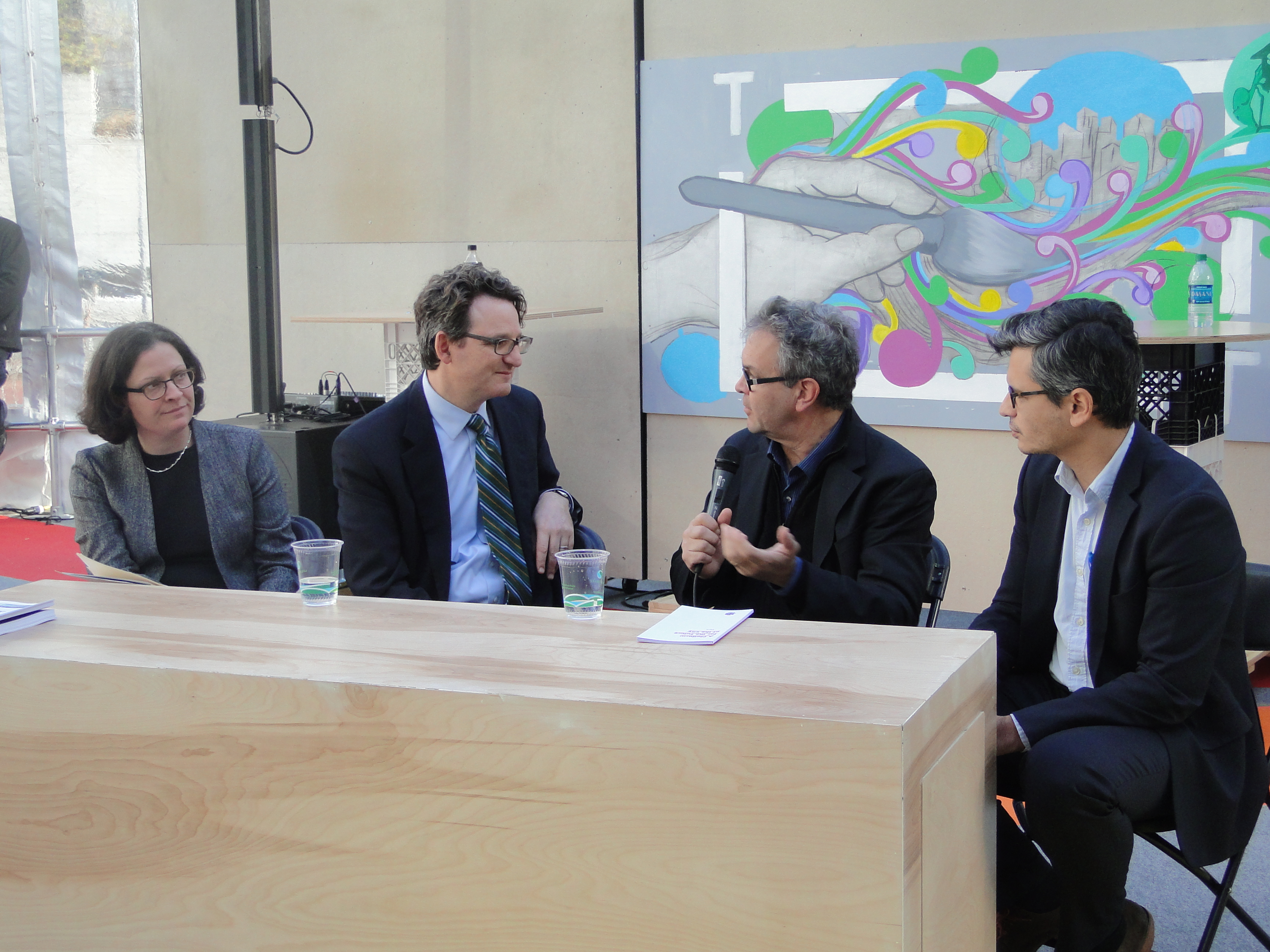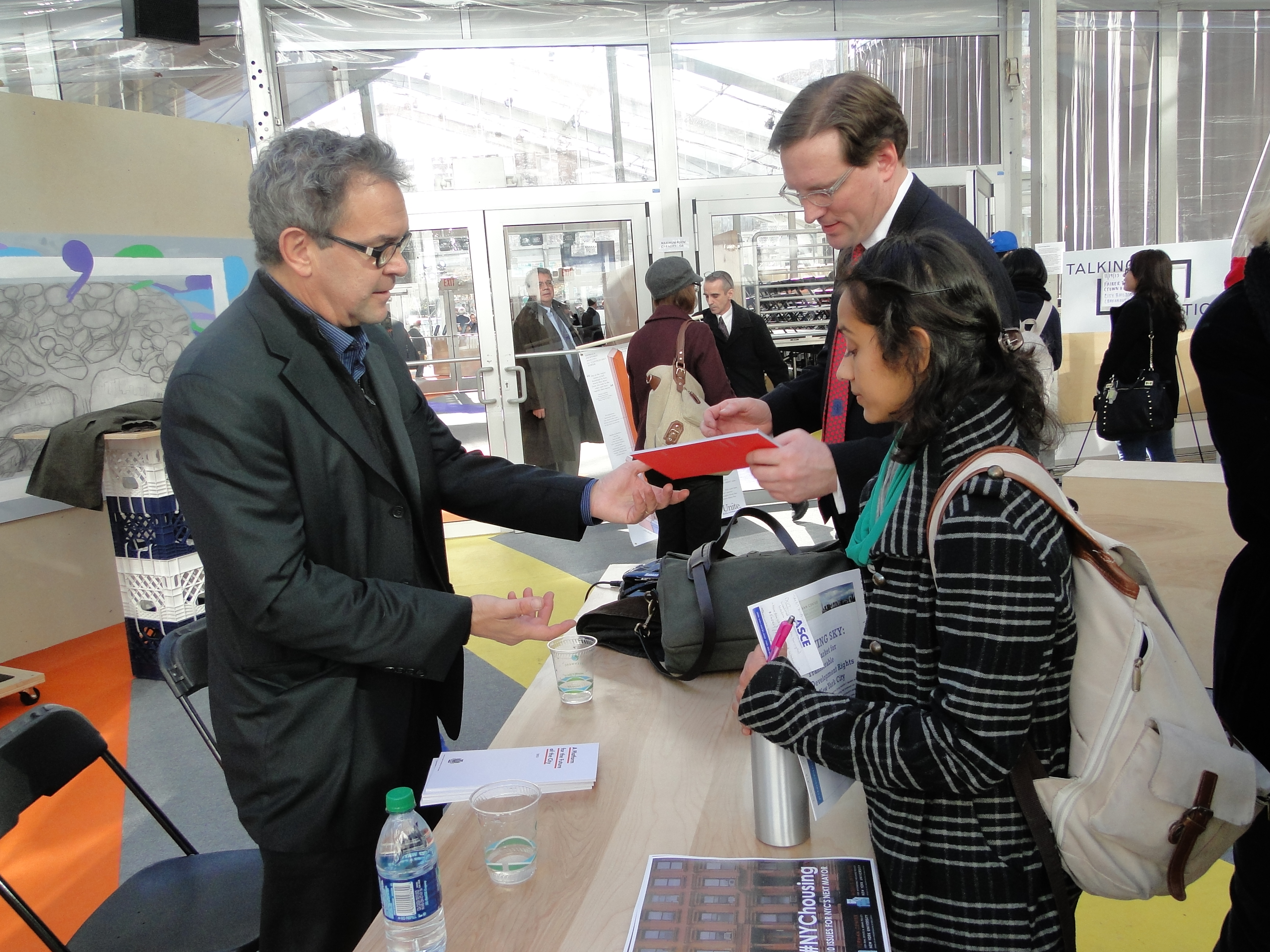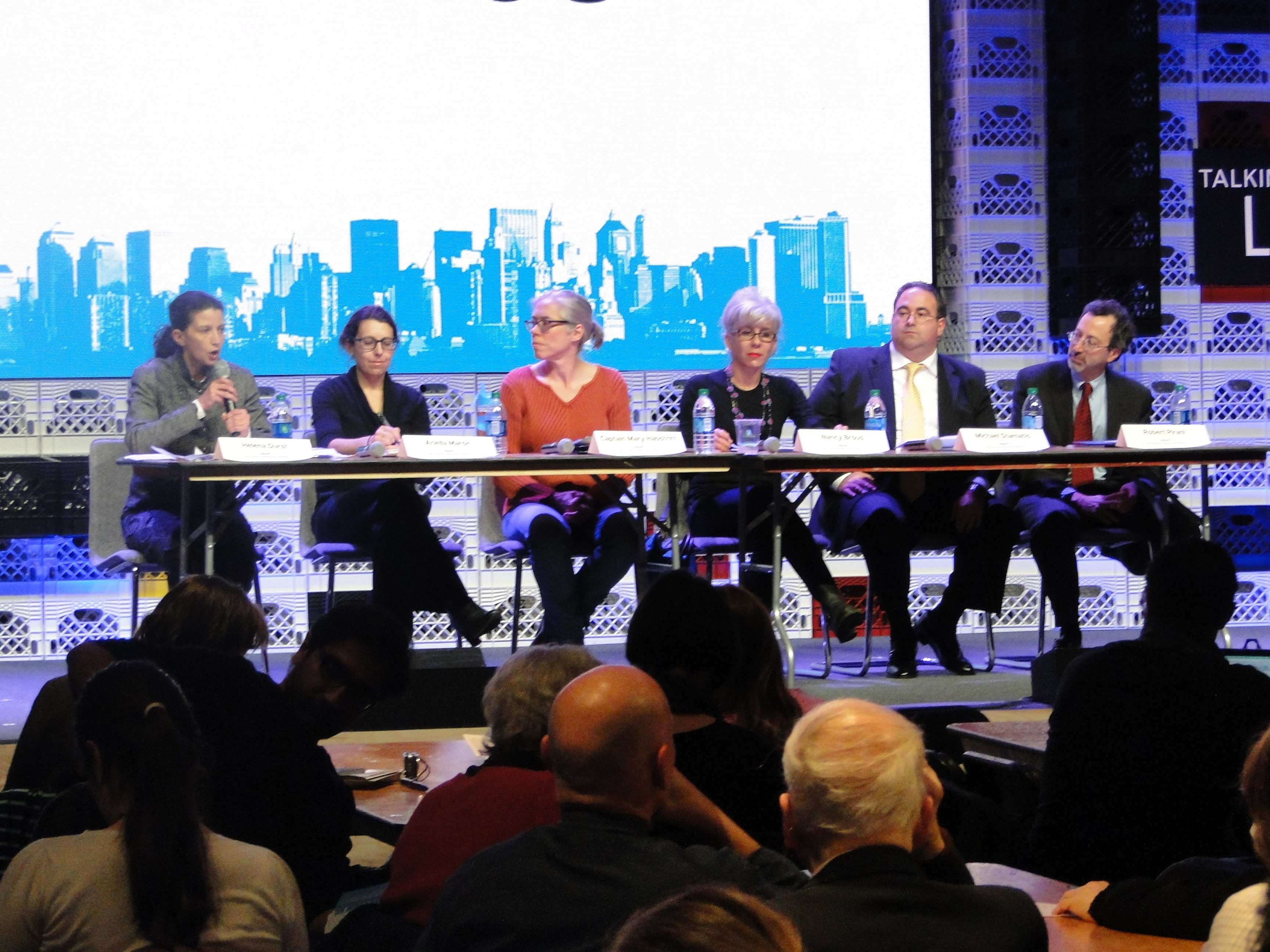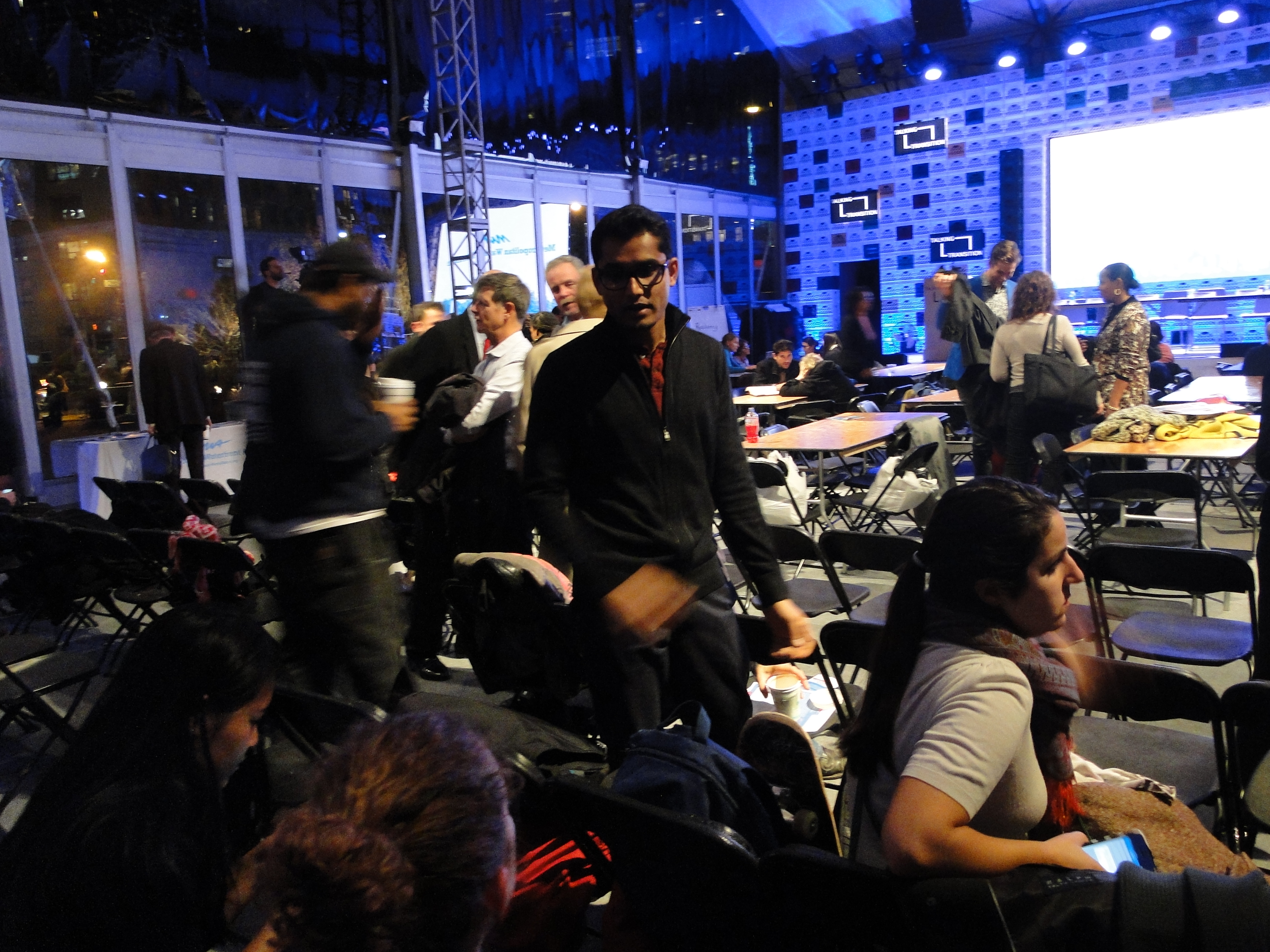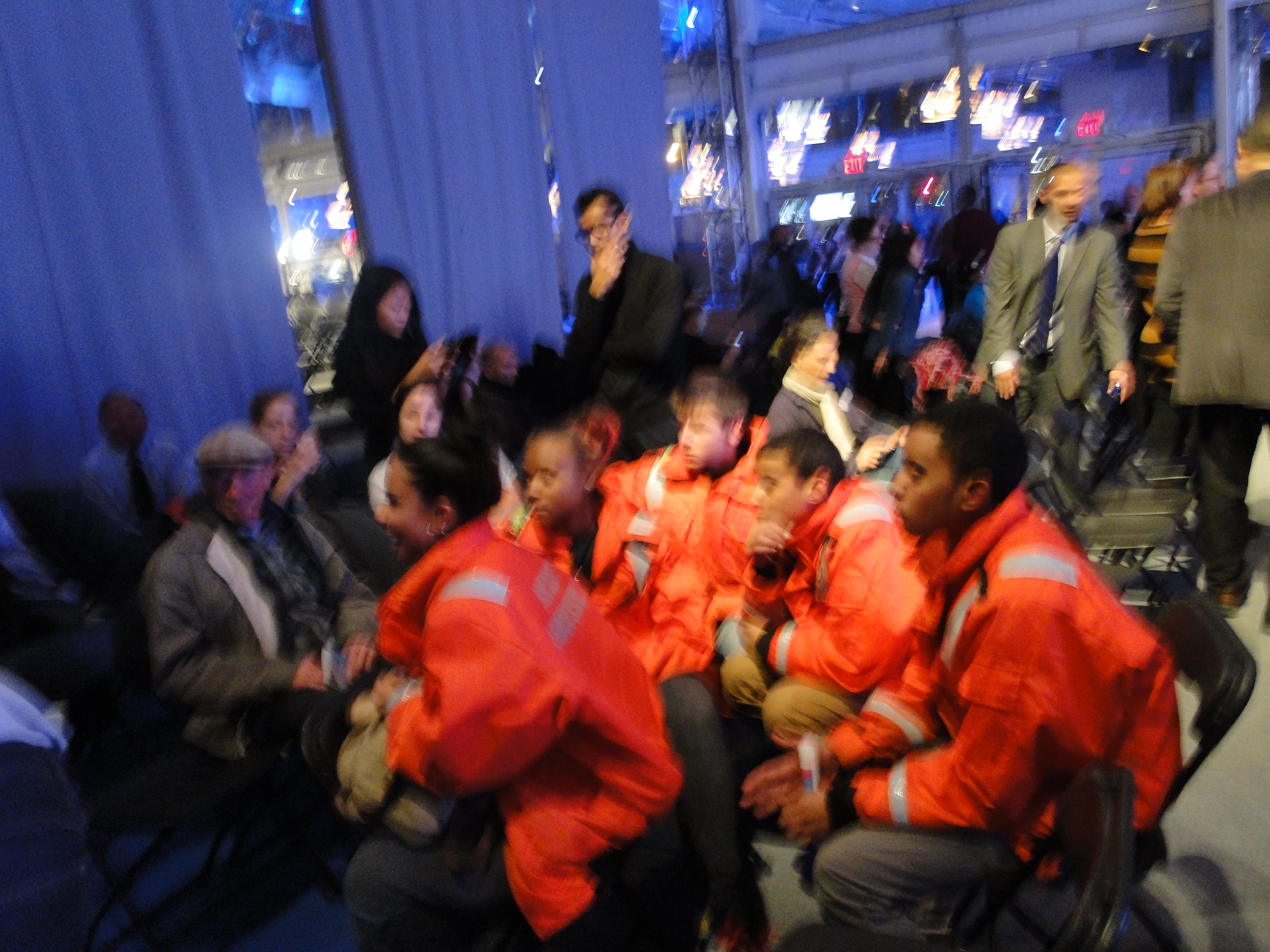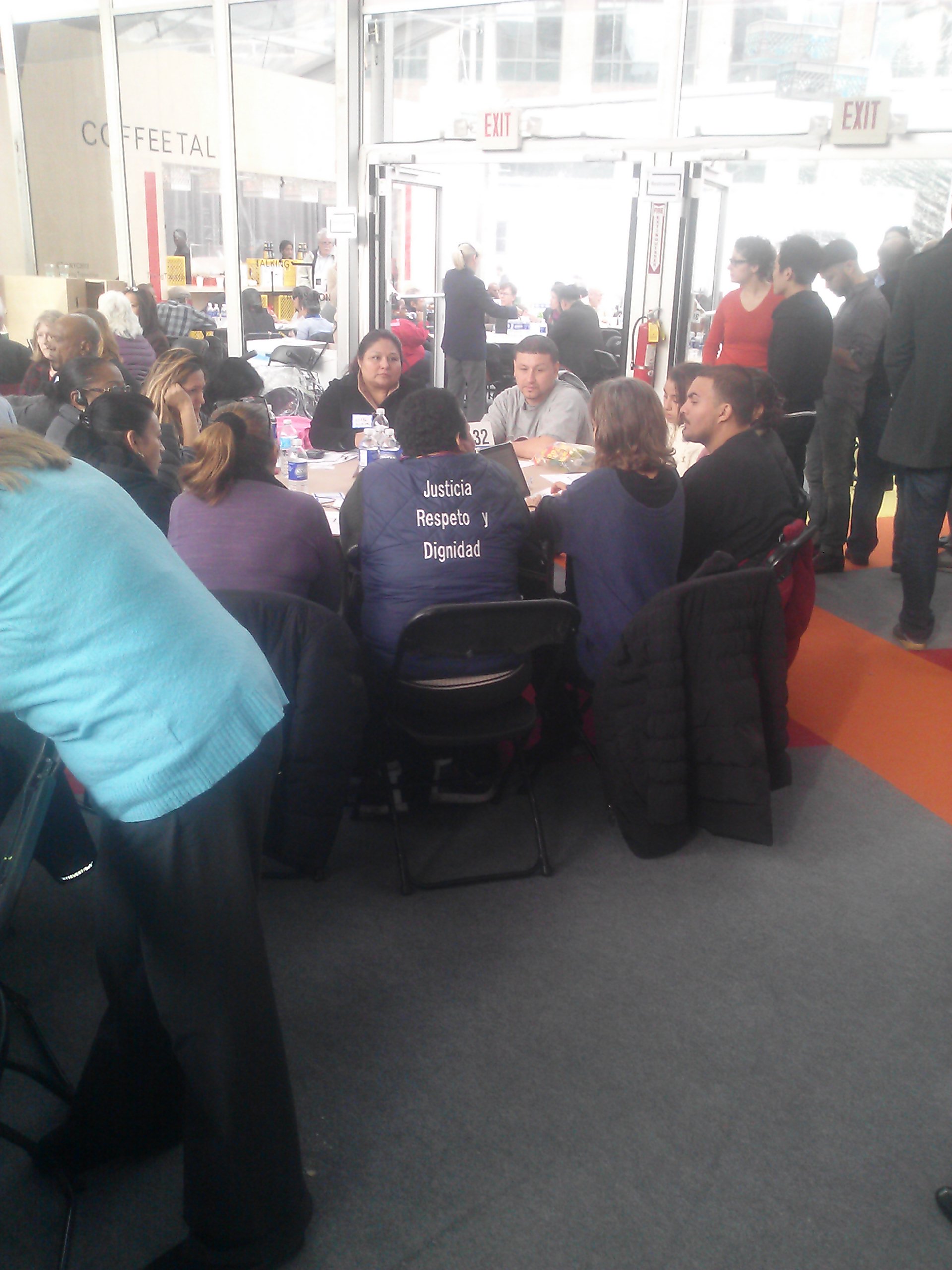by: Camila Schaulson Frenz
What do an Occupy Wall Street veteran, a kindergarten teacher, a high school student, an architect, and a business consultant have in common? If you can’t think of a witty reply, fret not. All of these individuals, and many others, participated in a panel discussion and workshop on waterfront development, one of the many events that attempted to cull information on what matters to New Yorkers during “Talking Transition.”
The content and format of the workshop, organized in collaboration with the Metropolitan Waterfront Alliance, fully embodied the ethos of the Transition Tent, which hosted ongoing panels, workshops, and even musical performances from 11.09.13-23.13. Panelists representing different waterfront constituencies – recreation, transportation, resiliency, and maritime jobs – presented their respective topics and moderated table discussions with audience members. Margaret, the kindergarten teacher, advocated for natural, eco-friendly storm-prevention strategies like oyster reefs and marshlands. A student from the Harbor School lamented how development was constraining views of the water. Samarth Das, an urban designer at SCAPE/Landscape Architecture, a firm that has pioneered the concept of oyster reefs, pointed out the importance of education in creating more water-aware urban youth. New Yorkers from all walks of life joined together to give their suggestions to Mayor-elect Bill de Blasio.
Built less than a week before the elections and open for business just four days after de Blasio was elected, the speed at which the “Transition Tent” was built can be attributed to the significance of this election – the first transfer of power in 12 years. Production Glue’s design of the tent was meant to represent transparency and openness, two key concepts behind the tent’s goal to expand participatory democracy beyond the voting booth. Colorful milk crates, standing in for soapboxes, were a main decorative element used to create backdrops, signs, and even chandeliers. The entrance space served as a digital room stocked with iPads, where visitors could take a survey that allowed them to identify the issues affecting their communities. For the less technologically-adept, stickers with people’s suggestions – ranging from the practical to the playful – covered most of the surfaces. However, AIANY Committee on the Environment (COTE) Co-chair Ilana Judah, Intl. Assoc. AIA, criticized the tent design’s disregard for sustainability measures – the space required a lot of heating and utilized a lot of artificial lighting.
Judah’s criticism of the tent’s physical design didn’t stop her and five other AIANY COTE members from volunteering as moderators for “Sustainable, Healthy, and Resilient Construction,” organized in collaboration with the Urban Green Council. Participants were asked to reflect on the challenges to building sustainable, healthy, and resilient residences, and provide suggestions for the new mayor. To Judah, the most salient idea was the need for effective communication and access to information. She was impressed not only by the turn-out, but also by the participants’ suggestions, particularly the creation of informational storefronts located throughout the five boroughs to help people navigate resources.
AIANY Executive Director Rick Bell, FAIA, also got a chance to talk transition in “Rethinking Regulation: New Priorities for City Building,” organized by the Municipal Art Society (MAS). The panel, that included Jessica Yager of NYU’s Furman Center, NYC Department of Transportation Assistant Commissioner for Planning and Sustainability Andy Wiley-Schwartz, and moderator Raju Mann from MAS discussed how to synch building regulations to the city’s dynamic rate of change. Bell commented on the importance of having a strong regulatory environment that was nonetheless open to interpretation, negotiation, and experimentation, and also advocated for the creation of a new Deputy Mayor for Design & Planning position that would join together disparate and “siloized” agencies.
A number of other programs dealt with the built environment, including a panel on affordable housing organized by the Center for NYC Neighborhoods, a presentation on the future of transportation in NYC by the Regional Plan Association, and a workshop on resiliency by MAS. The true essence of “Talking Transition,” however, was the program’s holistic and comprehensive nature. Events ranged from talks about what makes great public schools to strategies for addressing the AIDS epidemic and promoting immigrant rights. Translators were also available for non-native English speakers.
The event culminated with a “Town Meeting,” where a full tent and online viewers participated in discussing three issues that were most often described as priorities, based on data from 65,000 surveys conducted at the Transition Tent and at sites throughout the five boroughs: education, housing, and police-community relations.
But there is one final piece of the puzzle. “Talking Transition” was highly effective as a civic forum. The question on everyone’s minds now, and one that was frequently buzzing through the tent, is what will be done now that these thoughts and opinions have been gathered? Judah raised this question in relation to the advisory opinions of Community Boards, which need not necessarily be taken into account. Will the opinions of the 50,000 New Yorkers who participated matter?
A few signs let us hope that they will. Transition Co-chairs Carl Weisbrod and Jennifer Jones Austin were both present at the “Town Meeting,” and assured participants: “This is the beginning of a conversation. Your voices will carry.” Even more encouraging was the mayor-elect’s presence at the tent on 11.20.13, where he voiced his excitement about the number of people who were participating and voicing their views. “I think there’s going to be a lot of hidden gems in this process,” he stated. “I think we’re going to get a lot of insight; we’re going to hear ideas we hadn’t heard through more traditional means.” In fact, with its participatory focus, “Talking Transition” seems to be right up de Blasio’s alley: “As I’ve said, a lot of times the best solutions are grassroots solutions.”
Event: Talking Transition
Location: Transition Tent, Duarte Square, Canal Street & 6th Avenue, 11.09–23.13
Speakers: Click here for a full list of events and speakers
Producers: HR&A Advisors (Program Design & Implementation, Digital Strategy, Programming and Website), Production Glue (Producer), Control Group (Digital Strategy), OneCounts (Town Meeting), Neil Donnelly (Identity), Risa Heller Communications (Public Relations)
Sponsors: The Atlantic Philanthropies, Brooklyn Community Foundation, Ford Foundation, The New York Community Trust, New York Foundation, The New York Women’s Foundation, North Star Fund, Open Society Foundations, Charles H. Revson Foundation, and Rockefeller Brothers Foundation








